6.Shiunzan Ryugenji Temple
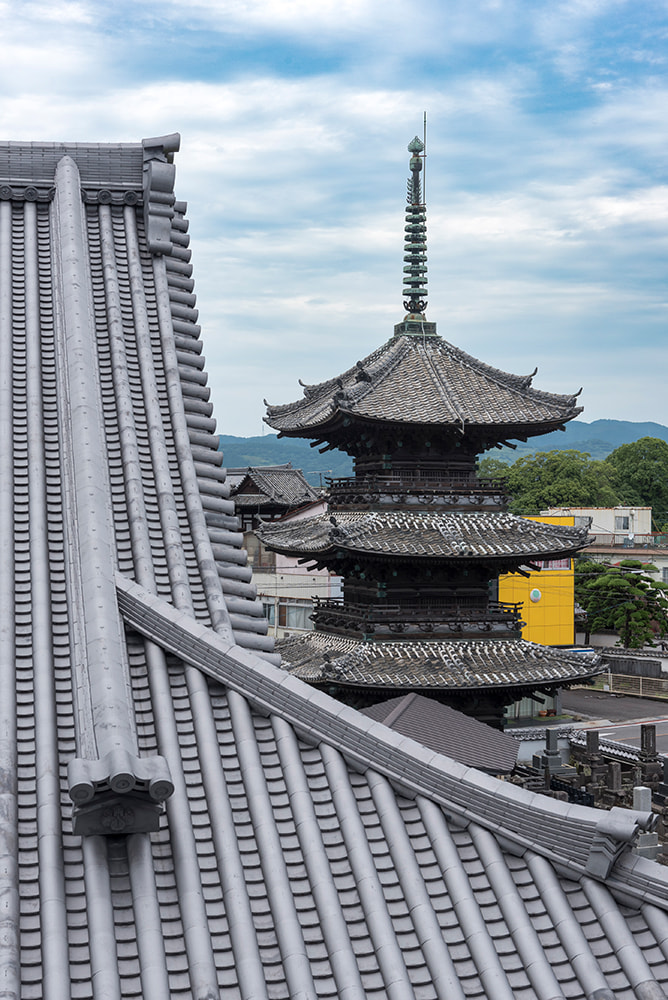
The scenery of the three-storied pagoda,
beloved for more than 160 years
The three-storied pagoda of Ryugenji Temple is likely the most distinctive feature of the scenery of Usuki, a town of prayer. It is said that in the year 1600, Saint Enyo, a monk traveling around the country, came to this land after dreaming of a rampaging dragon. He chanted Buddhist prayers, which caused the dragon to ascend to heaven, and then built the temple. The three-storied pagoda was built to enshrine a statue of Prince Shotoku, who was believed to be the deity of architecture. It was designed by Dannai Takahashi Dannai, a master craftsman from Usuki, and then built by Usuki carpenters. It is also amazing that such an exquisite example of architecture was created solely by local residents. The statue of Prince Shotoku that was enshrined in this three-storied pagoda is now temporarily enshrined in the main hall. The Amida Nyorai, the principal image of the temple, is a relatively new statue dating from the Meiji Era (1868-1912), but the previous statue (currently enshrined in the storeroom) was removed from the main hall of the temple when it was destroyed in the Satsuma Rebellion of 1877, along with a necklace that belonged to the Inaba Family. As the temple was rebuilt from the ashes of war, the current head priest has a strong desire to bequeath the three-storied pagoda to the next generation. In this age, with such instability in the world and in people’s feelings, we should once again heed the words of Prince Shotoku: “Harmony is the greatest of virtues.”
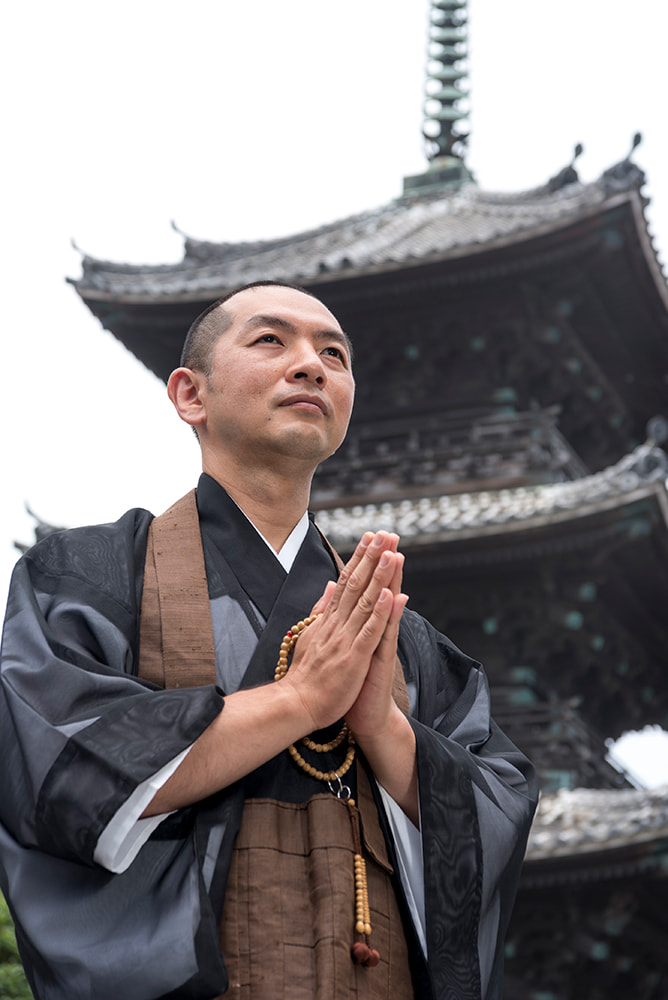
Koichi Hoshi is the 23rd generation head priest.
He is focused on repairing the three-storied pagoda, which is badly damaged.
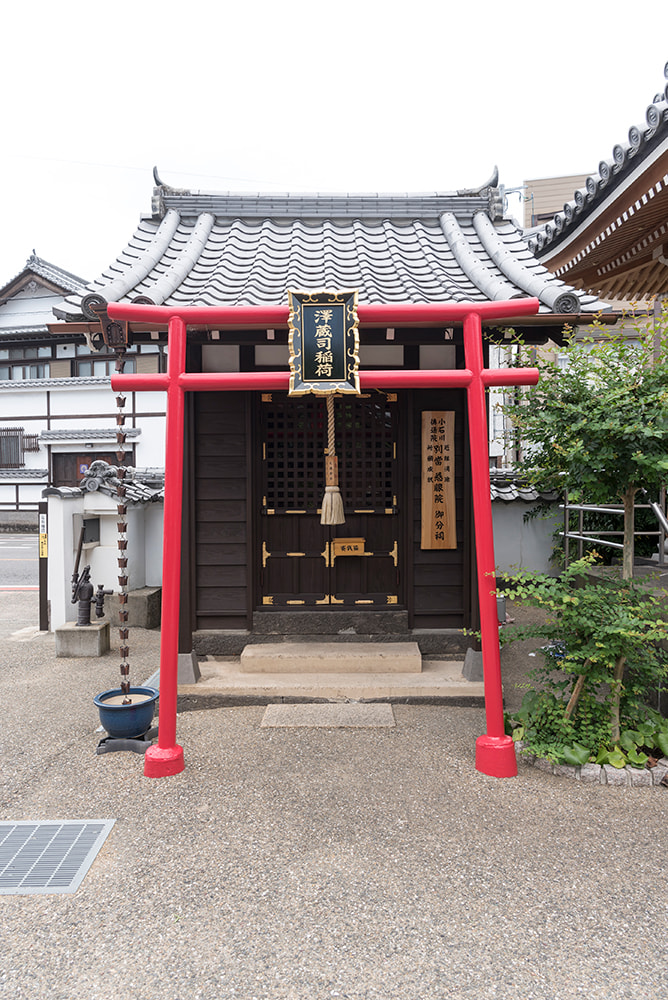
On the temple grounds is the only branch shrine in Japan of Jigen-in Takuzosu-inari Shrine, a well-known place of mystical energy in Tokyo.
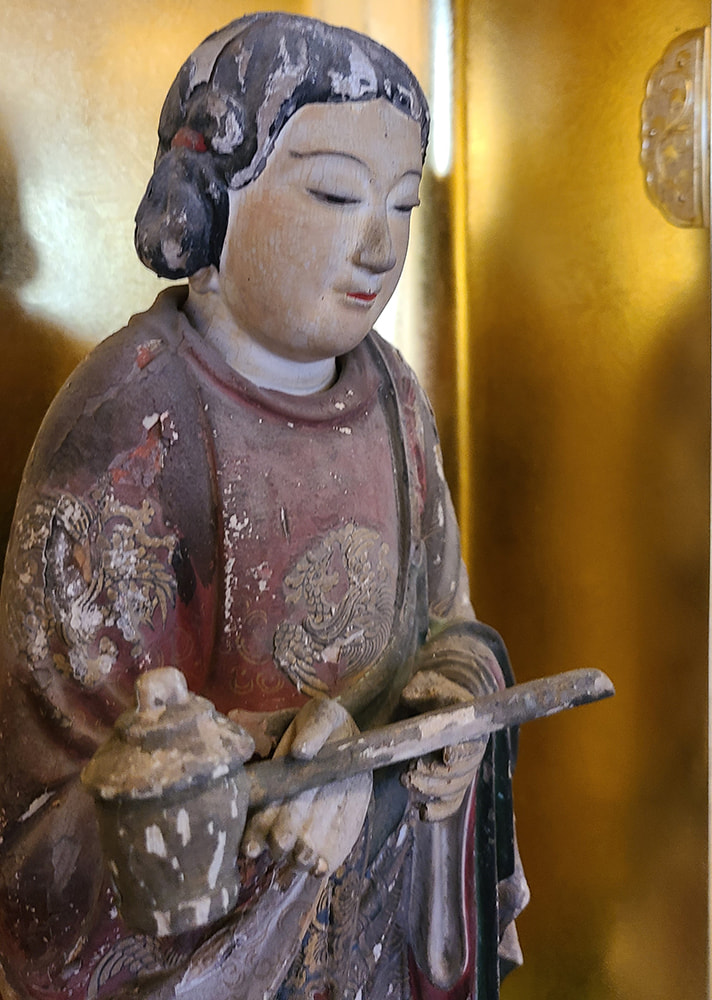
The principal image, a statue of Prince Shotoku in the three-storied pagoda. He is plump and youthful, and even lacks any facial hair.
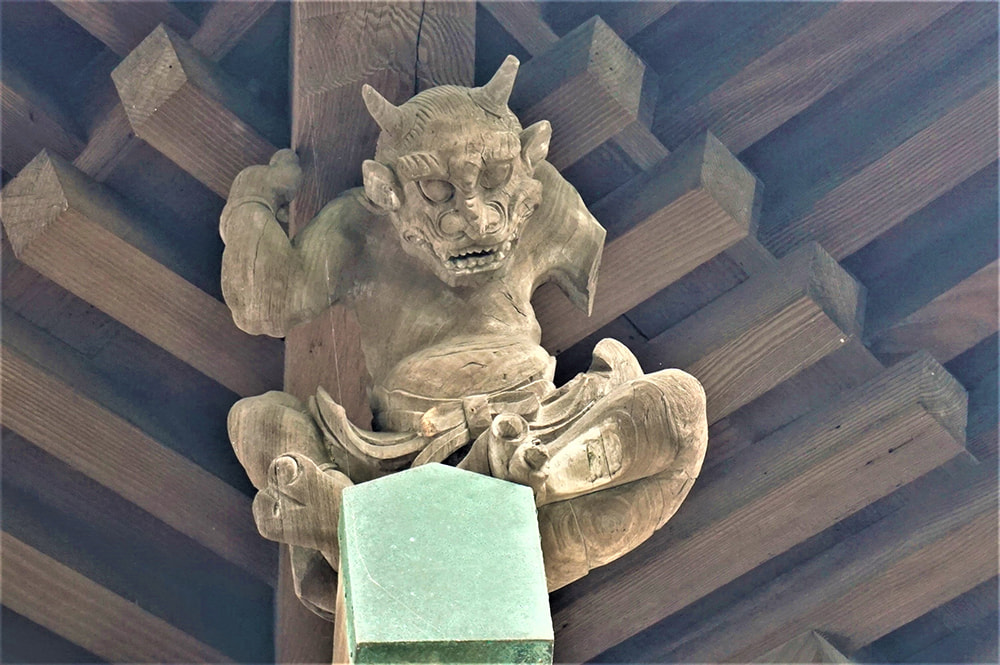
These lovable imps hold up the three-storied pagoda. Of the four of them, two have damage to their arms.
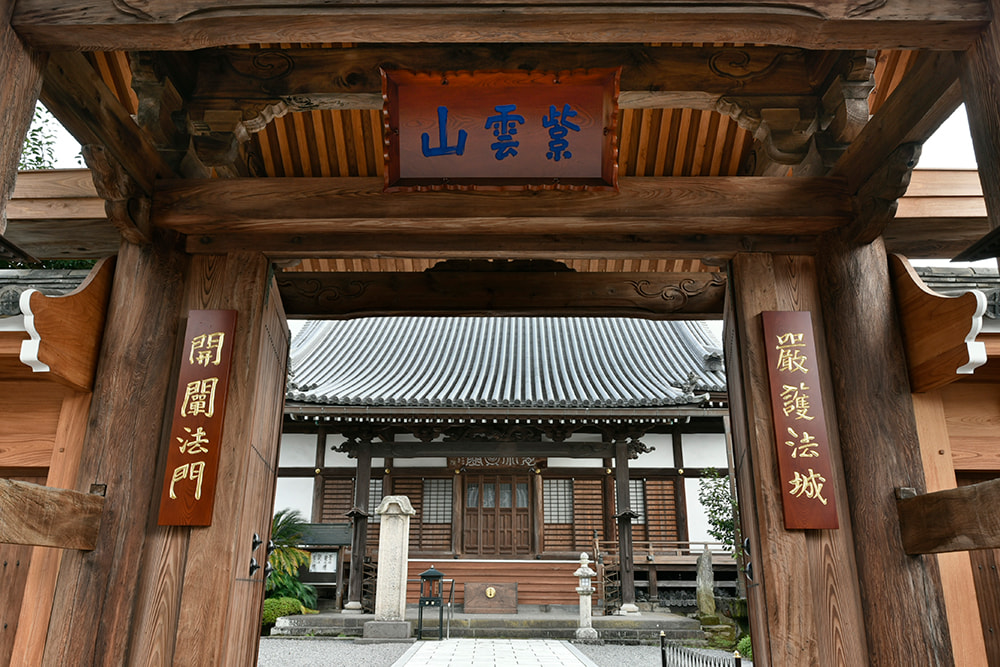
On the right is “Gengo Hojo” (“defending the strong rock of Buddha's teachings”).
On the left is the temple gate with the words “Kaisen Homon” (“from this temple expands the gate of Buddhism”).
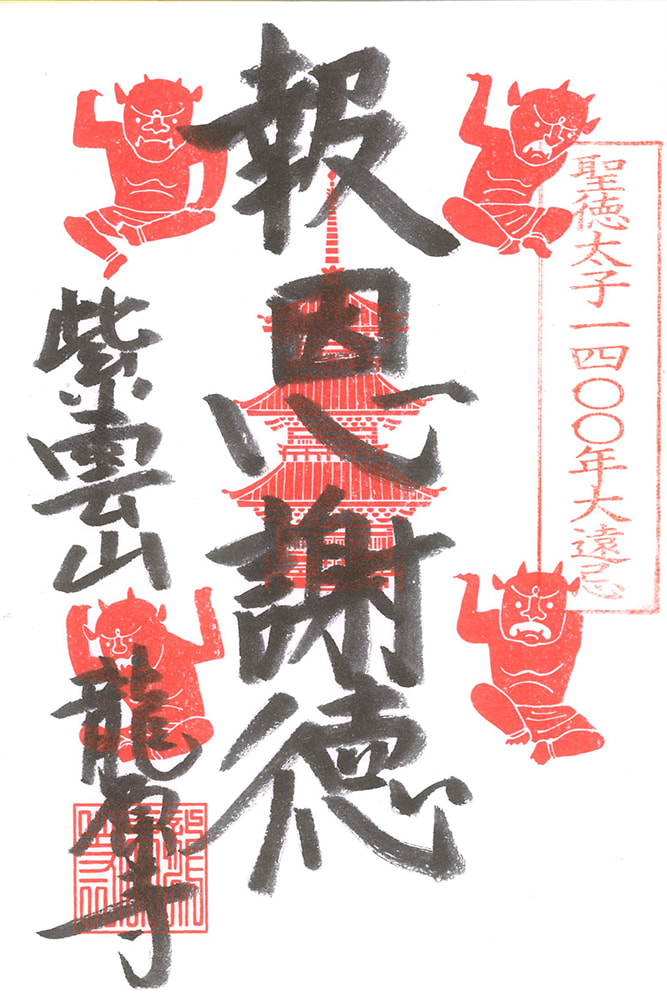
- Address
- 134-1 Fukura, Usuki City, Oita Prefecture
- TEL
- 0972-62-2717
- Parking
- Available
- Stamp location
- At the temple office counter
- Restrooms
- Available
